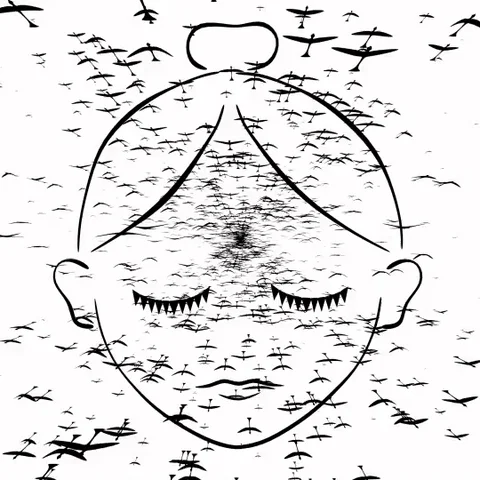from Maha Bodhi Society will be training on Meditation on every
Saturdays from 05:00 PM to 07:PM. Staff and students of Spastics Society of Karnataka are requested to
attend the same.
through
http://sarvajan.ambedkar.org
runs
Analytic Insight Net - FREE Online Tipiṭaka Law Research & Practice University
in
111 CLASSICAL LANGUAGES
DO GOOD BE MINDFUL and to Propagate TIPITAKA - BUDDHA AND HIS DHAMMA
Suttas word by word in Pali and all 111 Classical languages because
born baby is kept isolated without anyone communicating with the baby,
after a few days it will speak and human natural (Prakrit) language
known as Classical Magahi Magadhi/Classical Chandaso language/Magadhi Prakrit/Classical Hela Basa (Hela Language)/Classical Pali which are the same. Buddha spoke in Magadhi. All the 7111 languages and dialects are off shoot of Classical
Magahi Magadhi. Hence all of them are Classical in nature (Prakrit) of
Human Beings, just like all other living spieces have their own natural
languages for communication. 111 languages are translated by https://translate.google.com
peace of all Awakened Aboriginal Societies and for their Eternal Bliss
as Final Goal.
Meditate
throughout life for Welfare, Happiness and Peace in all postures of the
body including, sitting, standing, lying, walking, cycling, swimming,
performing martial arts, Tai Chi, Kung Fu, Karate, Kalari and so on.
Why because:





https://www.youtube.com/watch?v=z-w3qIWZnh0
The 3 trainings. Piya Tan 190609b
TheMindingCentre
362 subscribers
Sikkhattaya Sutta 2 (A 3.89 @ SD 47.17). Download sutta from: http://www.themindingcentre.org/dharm…
Category
Education
http://www.buddha-vacana.org/sutta/anguttara/…/an03-091.html
>> Sutta Piṭaka >> Aṅguttara Nikāya >> Tika Nipāta
AN 3.91 (A i 235) Sikkhattaya Sutta — The three trainings —
[sikkhā-taya]
Pāḷi
Tisso imā bhikkhave sikkhā. Katamā tisso? Adhisīla-sikkhā adhicitta-sikkhā adhipaññā-sikkhā.
Katamā ca, bhikkhave, adhisīla-sikkhā? Idha bhikkhave bhikkhu sīlavā
hoti pātimokkha-saṃvara-saṃvuto viharati ācāra-gocara-sampanno
anumattesu vajjesu bhayadassāvī samādāya sikkhati sikkhāpadesu.
Ayaṃ vuccati bhikkhave adhisīla-sikkhā.
Katamā ca, bhikkhave, adhicitta-sikkhā? Idha bhikkhave bhikkhu
vivicceva kāmehi vivicca akusalehi dhammehi savitakkaṃ savicāraṃ
vivekajaṃ pītisukhaṃ paṭhamaṃ jhānaṃ upasampajja viharati;
vitakkavicārānaṃ vūpasamā ajjhattaṃ sampasādanaṃ cetaso ekodibhāvaṃ
avitakkaṃ avicāraṃ samādhijaṃ pītisukhaṃ dutiyaṃ jhānaṃ upasampajja
viharati;
pītiyā ca virāgā upekkhako ca viharati sato ca
sampajāno sukhañca kāyena paṭisaṃvedeti yaṃ taṃ ariyā ācikkhanti:
‘upekkhako satimā sukhavihārī’ti tatiyaṃ jhānaṃ upasampajja viharati;
sukhassa ca pahānā dukkhassa ca pahānā pubbeva somanassadomanassānaṃ
atthaṅgamā adukkhamasukhaṃ upekkhāsatipārisuddhiṃ catutthaṃ jhānaṃ
upasampajja viharati.
Ayaṃ vuccati bhikkhave adhicitta-sikkhā.
Katamā ca, bhikkhave, adhipaññā-sikkhā? Idha, bhikkhave, bhikkhu
āsavānaṃ khayā an-āsavaṃ cetovimuttiṃ paññāvimuttiṃ diṭṭheva dhamme
sayaṃ abhiññā sacchikatvā upasampajja viharati. Ayaṃ vuccati bhikkhave
adhipaññā-sikkhā.
Imā kho bhikkhave tisso sikkhā ti.
|
|
https://www.youtube.com/watch?v=5TZfyq1XTd0&t=336s
Word of the Buddha (Part 1) | Ajahn Brahm | 27 November 2016
Buddhist Society of Western Australia
128K subscribers
Sutta Class
Ajahn Brahm is taking a classic text compiled by the Venerable
Nyanatiloka titled the “Word of the Buddha” which provides a staged
summary of the Buddha Dhamma. But Ajahn Brahm is heavily revising the
text to bring it up to date with contemporary English language usage.
Buddhist Society of Western Australia
https://www.bswa.org
Category
Nonprofits & Activism
EnglishAN 3.91 (A i 235) Sikkhattaya Sutta — The three trainings —
[sikkhā-taya] Here the Buddha gives an alternate definition of
adhipaññāsikkhā.There are, bhikkhus, these three sikkhās. Which three?
Adhisīla-sikkhā, adhicitta-sikkhā, adhipaññā-sikkhā.And what, bhikkhus,
is adhisīla-sikkhā? Here, bhikkhusThis, bhikkhus, is called
adhisīla-sikkhā.And what, bhikkhus, is adhicitta-sikkhā? Here, bhikkhus,
This, bhikkhus, is called adhicitta-sikkhā.
And what, bhikkhus, is
adhipaññā-sikkhā? Here, bhikkhus, a bhikkhu, with the destruction of
the āsavas, having reached in visible phenomena the cetovimutti without
āsavas and paññāvimutti, having himself realized them through abhiññā,
he dwells therein. This, bhikkhus, is called adhipaññā-sikkhā.
These, bhikkhus, are the three sikkhās.
https://www.youtube.com/watch?v=5TZfyq1XTd0&t=336s
புத்தரின் வார்த்தை (பகுதி 1) | அஜான் பிரம்ம் | 27 நவம்பர் 2016
மேற்கு ஆஸ்திரேலியாவின் ப Society த்த சங்கம்
128 கே சந்தாதாரர்கள்
சுட்டா வகுப்பு
அஜான் பிராம் புத்தமதத்தின் ஒரு சுருக்கமான உரையை வழங்கும் “புத்தரின்
வார்த்தை” என்ற தலைப்பில் புனித நயனட்டிலோகா தொகுத்த ஒரு உன்னதமான உரையை
எடுத்து வருகிறார். ஆனால் அஜான் பிராம் சமகால ஆங்கில மொழி பயன்பாட்டுடன்
உரையை புதுப்பிக்க பெரிதும் திருத்துகிறார்.
மேற்கு ஆஸ்திரேலியாவின் ப Society த்த சங்கம்
https://www.bswa.org
வகை
இலாப நோக்கற்ற மற்றும் செயல்பாடுகள்
ஆங்கிலன் 3.91 (A i 235) சிக்கட்டயா சுட்டா - மூன்று பயிற்சிகள் -
[sikkhā-taya] இங்கே புத்தர் adhipaññāsikkhā க்கு ஒரு மாற்று வரையறையை
அளிக்கிறார். பிக்குக்கள், இந்த மூன்று சிக்காக்கள் உள்ளன. எந்த மூன்று?
ஆதிசலா-சிக்கா, ஆதிசிட்டா-சிக்கா, ஆதிபா-சிக்கா.மேலும், பிக்குக்கள்,
ஆதிசலா-சிக்கா என்றால் என்ன? இங்கே, பிக்குஸ், பிக்குஸ், ஆதிசலா-சிக்கா
என்று அழைக்கப்படுகிறார். மேலும், பிக்குஸ், ஆதிசிட்டா-சிக்கா என்றால்
என்ன? இங்கே, பிக்குஸ், இது, பிக்குஸ், ஆதிசிட்டா-சிக்கா என்று
அழைக்கப்படுகிறது.
பிக்குஸ், ஆதிபா-சிக்கா என்றால் என்ன? இங்கே,
பிக்குகள், ஒரு பிக்கு, சாவாக்களின் அழிவுடன், காணக்கூடிய நிகழ்வுகளில்
அஸவாஸ் மற்றும் பாவிமுட்டி இல்லாமல் செட்டோவிமுட்டியை அடைந்து, அபி மூலம்
அவற்றை உணர்ந்தபின், அவர் அதில் வசிக்கிறார். இது, பிக்குஸ், ஆதிபா-சிக்கா
என்று அழைக்கப்படுகிறது.
இவர்கள், பிக்குக்கள், மூன்று சிக்கர்கள்.
இந்த வலைத்தளத்தைப் பற்றி
youtube.com
புத்தரின் வார்த்தை (பகுதி 1) | அஜான் பிரம்ம் | 27 நவம்பர் 2016
சுட்டா வகுப்பு அஜான் பிரம்ம் வணக்கத்தாரால் தொகுக்கப்பட்ட ஒரு உன்னதமான உரையை எடுத்து வருகிறார்…
https://www.youtube.com/watch?v=zhujOzLzU80
Buddhist Monks Reciting Buddhist Sanskrit and Pali Prayers for World Peace
The Speaking Heart
2.44K subscribers
Buddhist Monks Reciting Buddhist Sanskrit and Pali Prayers for World Peace
Category
Music
84) छ्लस्सिचल् षन्स्क्रित् छ्लस्सिचल् षन्स्क्रित्
ह्त्त्प्सः//www.योउतुबे.चोम्/wअत्च्ह्?व्=उब्9ऊह्मिअट्8E
Fइर्स्त् टुर्निन्ग् ओf थे Wहेएल् ओf ढर्म
णेw Kअदम्प ट्रदितिओन्
17.7K सुब्स्च्रिबेर्स्
Fरोम् थे प्लय् थे Lइfए ओf Bउद्ध
छतेगोर्य्
Eदुचतिओन्
ह्त्त्पः//www.चोलुम्बिअ.एदु/…/00अम्बे…/अम्बेद्कर्_बुद्ध/03_03.ह्त्म्ल्
Bओओक् ठ्रेए, Pअर्त् ईईई—Wहत् इस् ढम्म
1. *टो ंऐन्तैन् Pउरित्य् ओf Lइfए इस् ढम्म* — 2. *टो ऋएअच्ह्
Pएर्fएच्तिओन् इन् Lइfए इस् ढम्म* — 3. *टो Lइवे इन् णिब्बन इस् ढम्म* —
4. *टो ङिवे उप् छ्रविन्ग् इस् ढम्म* — 5. *टो बेलिएवे थत् अल्ल्
चोम्पोउन्द् थिन्ग्स् अरे इम्पेर्मनेन्त् इस् ढम्म* — 6. *टो बेलिएवे थत्
Kअर्म इस् थे इन्स्त्रुमेन्त् ओf ंओरल् Oर्देर् इस् ढम्म*
§ 1. टो ंऐन्तैन् Pउरित्य् ओf Lइfए इस् ढम्म
(1.इ)
1. “ठेरे अरे थेसे थ्रेए fओर्म्स् ओf पुरित्य्… आन्द् ओf wहत् सोर्त् इस् पुरित्य् ओf बोद्य्?
2. “ःएरेइन् अ चेर्तैन् ओने अब्स्तैन्स् fरोम् तकिन्ग् लिfए, fरोम्
स्तेअलिन्ग्, fरोम् सिन्fउल् लिविन्ग्. ठिस् इस् चल्लेद् ‘पुरित्य् ओf
बोद्य्.’
3. “आन्द् ओf wहत् सोर्त् इस् पुरित्य् ओf स्पेएच्ह्?
4. “ःएरेइन् अ चेर्तैन् ओने अब्स्तैन्स् fरोम् fअल्सेहोओद्…
5. “आन्द् ओf wहत् सोर्त् इस् पुरित्य् ओf मिन्द्?
6. “ःएरेइन् अ मोन्क्, इf हे हवे सोमे पेर्सोनल् सेन्सुअल् देसिरे, इस्
अwअरेः ‘ ठेरे इस् इन् मे सेन्सुअल् देसिरे.’ ईf थेरे बे नोने हे इस्
लिकेwइसे अwअरे ओf इत्. आल्सो हे इस् अwअरे ओf होw थे अरिसिन्ग् ओf
सेन्सुअल् देसिरे नोत् येत् अरिसेन् चोमेस् अबोउत्, अन्द् होw इत् इस्
अबन्दोनेद् wहेन् इत् हस् अरिसेन्, अन्द् होw इन् थे fउतुरे थेरे इस् नो
सुच्ह् अरिसिन्ग्.
7. “ईf हे हवे सोमे पेर्सोनल् मलेवोलेन्चे, हे इस्
अwअरेः ‘ ठेरे इस् wइथिन् मे मलेवोलेन्चे.’ आल्सो हे इस् अwअरे ओf थे
अरिसिन्ग् . . . अन्द् थे अबन्दोनिन्ग् थेरेओf, अन्द् ओf होw इन् fउतुरे
थेरे इस् नो रेचुर्रेन्चे थेरेओf.
8. “ईf हे हवे सोमे पेर्सोनल्
स्लोथ्-अन्द्-तोर्पोर्…एxचितेमेन्त् अन्द् fलुर्र्य्…इf हे हवे सोमे
पेर्सोनल् दोउब्त्-अन्द्-wअवेरिन्ग्, हे इस् अwअरे ओf थे fअच्त्. आल्सो ओf
होw (एअच्ह् ओf थेसे) अरिसेस्, इस् अबन्दोनेद् अन्द् रेचुर्स् नोत् अगैन्
इन् fउतुरे. ठिस् इस् चल्लेद् ‘पुरित्य् ओf मिन्द्.’
9. “ःए wहो इस् पुरे इन् बोद्य्, स्पेएच्ह्, अन्द् मिन्द्,
“षिन्लेस्स् अन्द् च्लेअन् अन्द् ब्लेस्सेद् wइथ् पुरित्य्–
“‘षिन्-wअस्हेर्’ इस् थे नमे मेन् गिवे तो हिम्.”
आबोउत् ठिस् Wएब्सिते
योउतुबे.चोम्
Fइर्स्त् टुर्निन्ग् ओf थे Wहेएल् ओf ढर्म
Fरोम् थे प्लय् थे Lइfए ओf Bउद्ध
https://www.youtube.com/watch?v=ub9UhmiaT8E
First Turning of the Wheel of Dharma
New Kadampa Tradition
17.7K subscribers
From the play the Life of Buddha
Category
Education
§ 1. To Maintain Purity of Life is Dhamma
(1.ii)
1. “There are three forms of purity…Purity of body, purity of speech, purity of mind.”
2. “And of what sort is purity of body?”
3. “Herein a certain one abstains from taking life, from stealing,
from wrong practice in sensual lusts. This is called ‘purity of body.’”
4. “And of what sort is purity of speech?”
5. “Herein a certain one abstains from falsehood…from idle babble. This is called ‘purity of speech.’”
6. “And of what sort is purity of mind?”
7. “Herein a certain one is not covetous or malevolent of heart,
and has [a] right view. This is called ‘purity of mind.’ These are the
three forms of purity.”
https://www.youtube.com/watch?v=D1mHq2F7XCg
||060|| A question to Buddha? || புத்தரிடம் ஒரு கேள்வி? || tamil story ||
Tamil time
14.1K subscribers
புத்தரிடம் ஒரு கேள்வி? || A question to Buddha?
https://m.facebook.com/home.php?_rdr
https://tamiltimenew.blogspot.com
Click here to get more information to change your life style in good manner.
TAMIL TIME
Category
People & Blogs
§ 1. வாழ்க்கையின் தூய்மையைப் பேணுவது தர்மம்
(1.ii)
1. “தூய்மையின் மூன்று வடிவங்கள் உள்ளன … உடலின் தூய்மை, பேச்சின் தூய்மை, மன தூய்மை.”
2. “உடலின் தூய்மை எந்த வகையானது?”
3. “இங்கே ஒரு நபர் உயிரை எடுப்பதில் இருந்து, திருடுவதிலிருந்து,
சிற்றின்ப காமங்களில் தவறான நடைமுறையிலிருந்து விலகுகிறார். இது ‘உடலின்
தூய்மை’ என்று அழைக்கப்படுகிறது.”
4. “மேலும் பேச்சின் தூய்மை என்ன?”
5. “இங்கே ஒரு நபர் பொய்யிலிருந்து … செயலற்ற பாபிலிலிருந்து விலகுகிறார். இது ‘பேச்சின் தூய்மை’ என்று அழைக்கப்படுகிறது.”
6. “மனதின் தூய்மை என்ன?”
7. “இங்கே ஒரு குறிப்பிட்டவர் பேராசை கொண்டவர் அல்ல, இருதயமற்றவர்
அல்ல, சரியான பார்வையைக் கொண்டிருக்கிறார். இது ‘மன தூய்மை’ என்று
அழைக்கப்படுகிறது. இவை தூய்மையின் மூன்று வடிவங்கள். “
https://www.youtube.com/watch?v=m_mXGskHeZI
The Dharmadhatustava of Arya Nagarjuna recited in Sanskrit
M. Lindberg
133 subscribers
The Dharmadhatustava of Arya Nagarjuna (2:nd Century A.D.) is a short
text of a hudred verses included in the “collection of praises” dealing
with the nature of the Dharmadhatu or Ultimate Reality as understood in
Mahayana Buddhism. The text belongs to the Third Wheel of Dharma and has
an important position within the teachings of Buddha Nature. The text
has been preserved in Chinese and Tibetan translations, but has since
centuries been lost in the original Sanskrit, surviving only in quoted
fragments in the works of masters like Bhavaviveka, Ratnakarashanti,
Atisha and Naropa. A unique and singular Sanskrit manuscript from the
11:th Century has recently been recovered from the collections of the
Potala Palace, Lhasa, and is now published after painstaking editorial
work in Sanskrit, Tibetan and Chinese by Dr. Liu Zhen of the China
Tibetology Research Centre in cooperation with the Austrian Academy of
Sciences. The Dharmadhatustava (Beijing - Vienna 2015). The recitation
is based on this edition. For a full study with a translation and
analysis of the text along with a commentary by the Third Karmapa, see
“In Praise of Dharmadhatu” by Karl Brunnhölzl, The Nitartha
Institute/Snowlion, 2007. Sanskrit text recited by M. Lindberg.
For a preview of the translation, see p 117 onwards in Googlebooks: https://books.google.se/books/about/I…
Category
Education
84) छ्लस्सिचल् षन्स्क्रित् छ्लस्सिचल् षन्स्क्रित्
§ 1. टो ंऐन्तैन् Pउरित्य् ओf Lइfए इस् ढम्म
(1.इइ)
1. “ठेरे अरे थ्रेए fओर्म्स् ओf पुरित्य्…Pउरित्य् ओf बोद्य्, पुरित्य् ओf स्पेएच्ह्, पुरित्य् ओf मिन्द्.”
2. “आन्द् ओf wहत् सोर्त् इस् पुरित्य् ओf बोद्य्?”
3. “ःएरेइन् अ चेर्तैन् ओने अब्स्तैन्स् fरोम् तकिन्ग् लिfए, fरोम्
स्तेअलिन्ग्, fरोम् wरोन्ग् प्रच्तिचे इन् सेन्सुअल् लुस्त्स्. ठिस् इस्
चल्लेद् ‘पुरित्य् ओf बोद्य्.’”
4. “आन्द् ओf wहत् सोर्त् इस् पुरित्य् ओf स्पेएच्ह्?”
5. “ःएरेइन् अ चेर्तैन् ओने अब्स्तैन्स् fरोम् fअल्सेहोओद्…fरोम् इद्ले बब्ब्ले. ठिस् इस् चल्लेद् ‘पुरित्य् ओf स्पेएच्ह्.’”
6. “आन्द् ओf wहत् सोर्त् इस् पुरित्य् ओf मिन्द्?”
7. “ःएरेइन् अ चेर्तैन् ओने इस् नोत् चोवेतोउस् ओर् मलेवोलेन्त् ओf
हेअर्त्, अन्द् हस् [अ] रिघ्त् विएw. ठिस् इस् चल्लेद् ‘पुरित्य् ओf
मिन्द्.’ ठेसे अरे थे थ्रेए fओर्म्स् ओf पुरित्य्.”











